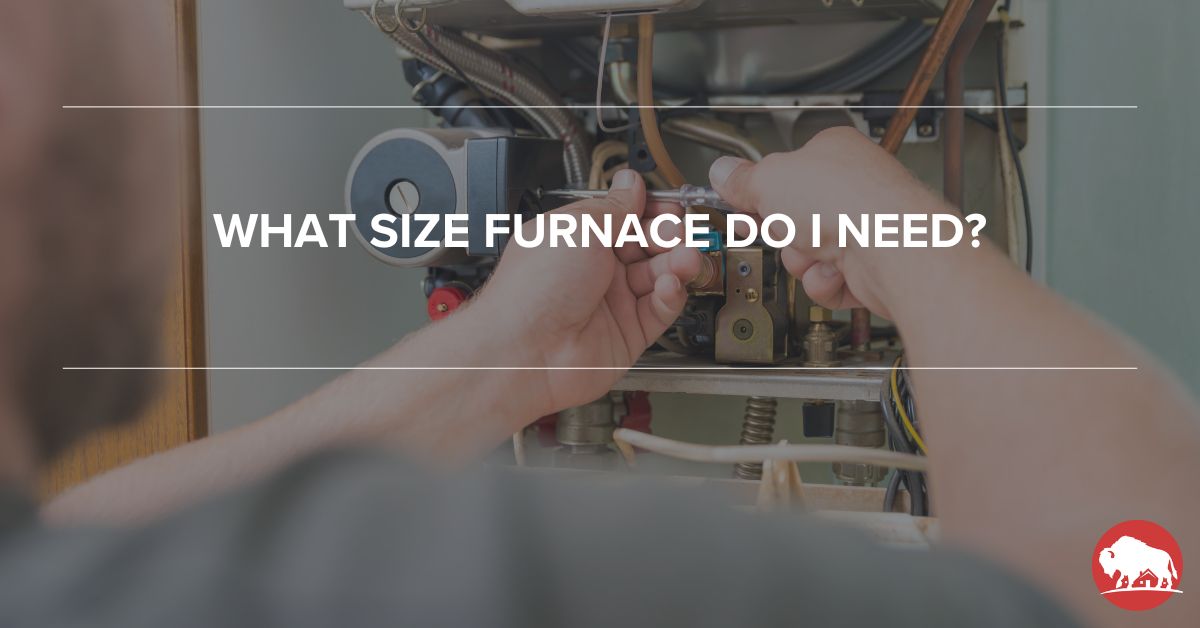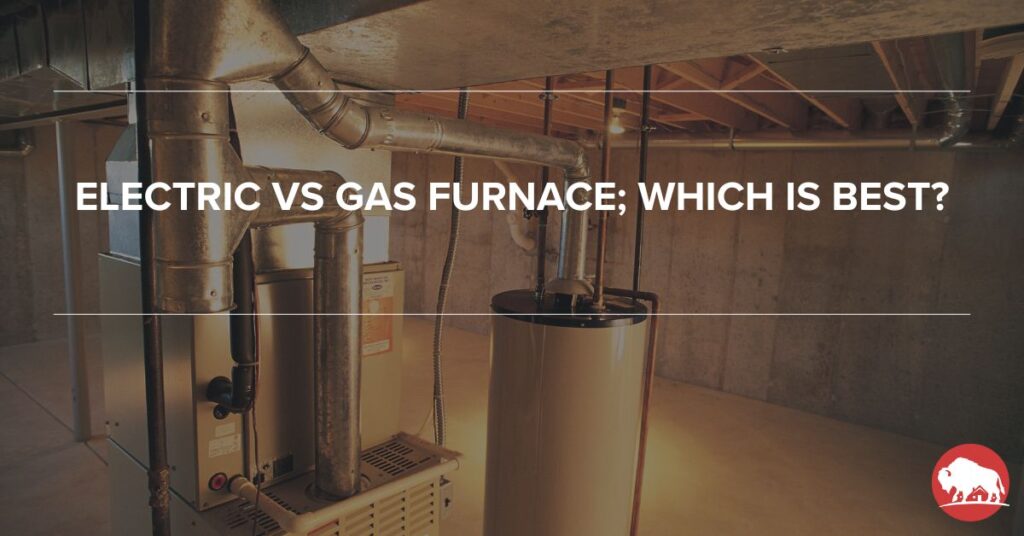Choosing the right furnace size for your home isn’t just about comfort—it’s about efficiency and cost savings, too. Did you know that improperly sized furnaces can lead to energy waste, with up to 30% of heating energy lost due to inefficiencies? That’s a significant hit to your wallet and the environment. In this guide, we’ll walk you through everything you need to know about furnace sizing, from understanding BTUs to making sure you pick the perfect fit for your home. Whether you’re replacing an old furnace or installing a new one, getting the size right is crucial for keeping your home warm and your energy bills low.
Understanding Furnace Size
What Are BTUs?
Before we get into the nitty-gritty of furnace sizing, let’s start with the basics: BTUs. BTU stands for British Thermal Unit, and it’s a measure of heat energy. When it comes to furnaces, BTUs tell you how much heat the furnace can produce. Think of it like horsepower in a car—the more BTUs, the more powerful the furnace.
Types of Furnaces
Now that you know what BTUs are, let’s talk about the different types of furnaces (electric vs gas furnace) you might consider for your home.
Electric Furnaces
Electric furnaces use—you guessed it—electricity to generate heat. They’re less efficient than gas furnaces, but they’re a good option if you don’t have access to natural gas. Plus, there’s no need for combustion or ventilation, which makes them easier to install.
Gas Furnaces
Gas furnaces are the most common type and run on natural gas or propane. They’re more energy-efficient than electric furnaces and can save you money in the long run. However, they do require a gas line hookup and proper ventilation.
Heat Pumps
Heat pumps are a bit different—they use electricity to move heat rather than generate it. This makes them super efficient, especially in milder climates. In colder areas, you might need a backup heating system, like electric coils, to stay warm.
Oil Furnaces
Oil furnaces burn heating oil to produce heat. They’re not as common these days but can be a solid choice in rural areas without natural gas. Just remember, they require an oil tank and proper ventilation.
Wood/Pellet Furnaces
For those who love the idea of burning wood or wood pellets, these furnaces could be a cozy choice. They do require more maintenance and cleaning, but if you don’t mind the extra work, they can be a sustainable option.
How to Determine the Right Furnace Size
Step 1: Calculate Your Home’s Heating Load
To figure out the right size furnace for your home, the first step is calculating your home’s heating load. This is basically the amount of heat needed to maintain a comfortable temperature inside.
Assessing Your Local Climate
The climate where you live plays a big role in determining your heating needs. If you’re in a colder area, you’ll need a furnace with a higher heating capacity to keep your home warm. Conversely, if you’re in a milder climate, you won’t need as much power.
Evaluating Insulation Quality
Good insulation can make a huge difference in how much heat your home requires. Well-insulated homes keep heat in, which means you won’t need as large a furnace. On the flip side, if your home’s insulation is lacking, you might need a furnace with a higher BTU output to compensate.
Considering Windows and Doors
Windows and doors are notorious for letting heat escape, especially if they’re old or not energy-efficient. The number, type, and condition of your windows and doors will impact your heating load, so take these into account when sizing your furnace.
Measuring Total Square Footage
Finally, measure the total square footage of your home. This includes all living spaces where you’ll need heating. Your home’s size is a key factor in determining the BTU output your furnace should have.
Step 2: Calculate the Required BTU Output
Once you have a handle on your home’s heating load, you can calculate the BTU output you’ll need.
Using the BTU Formula
A common formula for calculating BTUs is:
BTU = (Square Footage × Heating Load Factor) + (Number of People × 600)
The Heating Load Factor varies based on your home’s insulation and climate, typically ranging from 20–50 BTUs per square foot. For example, if you have a well-insulated home in a cold climate, you might use 35 BTUs per square foot as a starting point. Don’t forget to add 600 BTUs per person in your home to account for body heat!
Common Furnace Size Estimates Based on Square Footage
Here’s a quick reference to give you an idea of what size furnace you might need based on your home’s square footage:
- 1,200–1,500 sq. ft.: 55,000 BTUs
- 1,500–1,800 sq. ft.: 60,000 BTUs
- 1,800–2,500 sq. ft.: 70,000 BTUs
- 2,500–3,000 sq. ft.: 90,000 BTUs
- 3,000–3,500 sq. ft.: 100,000 BTUs
Step 3: The Importance of a Manual J Calculation
What Is a Manual J Calculation?
While the formulas and estimates we’ve discussed can give you a ballpark figure, the most accurate way to determine the right furnace size is through a Manual J calculation. This is a detailed analysis performed by an HVAC professional that considers all the variables—climate, insulation, windows, and more—to give you a precise furnace size recommendation.
Why You Should Hire a Professional
Manual J calculations are complex, and getting them wrong can lead to an undersized or oversized furnace. Hiring an HVAC professional ensures you get an accurate result, which means your furnace will run efficiently and keep your home comfortable without wasting energy.
Why Furnace Size Matters
Consequences of an Oversized Furnace
Bigger isn’t always better! An oversized furnace can cause problems like frequent cycling on and off, leading to uneven heating and wasted energy. Plus, all that stopping and starting can shorten the lifespan of your furnace.
Consequences of an Undersized Furnace
If your furnace is too small, it will struggle to keep your home warm. You’ll likely notice longer heating cycles, uneven temperatures, and higher energy bills as the furnace works overtime to meet your heating needs.
What’s Next? Final Steps in Choosing the Right Furnace Size
Choosing the right furnace size for your home is essential for maintaining comfort, maximizing efficiency, and keeping your energy costs in check. We’ve covered everything from understanding BTUs to calculating your home’s heating load and the importance of a professional Manual J calculation. By considering factors like your home’s square footage, insulation, climate, and even the number of occupants, you can make a well-informed decision when selecting a furnace. Remember, a properly sized furnace ensures consistent warmth, reduces energy waste, and saves you money in the long run. So before making your next purchase, take the time to evaluate your needs carefully—or consult with an HVAC professional to ensure you’re getting the perfect fit for your home.
Furnace Size FAQ
What happens if my furnace is too big or too small?
If your furnace is too big, it will short cycle, causing uneven heating and higher energy costs. If it’s too small, it won’t heat your home effectively, leading to longer heating cycles and higher energy bills.
How often should I perform a Manual J calculation?
A Manual J calculation should be performed any time you’re replacing your furnace or making significant changes to your home’s insulation, windows, or layout.
What factors affect furnace efficiency?
Furnace efficiency is affected by factors like AFUE ratings, the quality of your home’s insulation, the condition of your windows and doors, and the overall layout of your home.
Can I calculate furnace size on my own?
Yes, you can get a rough estimate using the formulas provided, but for the most accurate result, it’s best to hire a professional to perform a Manual J calculation.
How do I know if my current furnace is the right size?
If your furnace runs efficiently, maintains even temperatures throughout your home, and doesn’t cause unusually high energy bills, it’s likely the right size. If you’re experiencing issues, it might be worth having a professional assess your furnace size.






